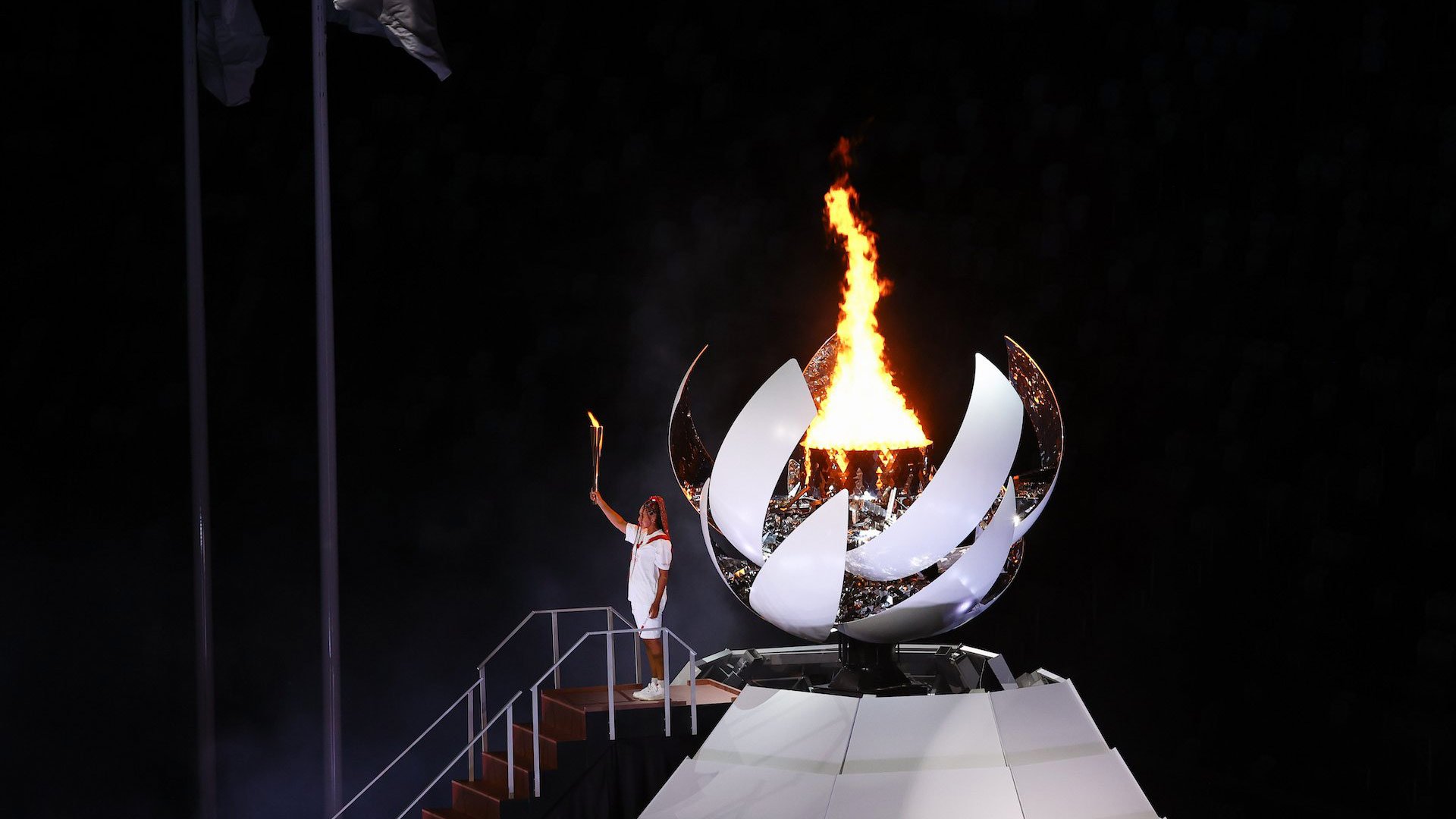
Tokyo 2020 was always supposed to be about broadcasting in 8K. It’s there but it’s been overtaken by other things.
Back in 2008, while the world was watching the Beijing Olympics, Japanese broadcaster NHK first brought its new Super Hi-Vision 8K technology to IBC and astonished everyone with the quality of the picture, the sheer size of the cameras, and the goal to be broadcasting in the format by the time of Tokyo 2020.
That was always held to be ambitious, and so it has proved. There is 8K being broadcast from the Tokyo 2020 Olympics but given that the first test transmissions were conducted at London 2012 and that the equipment and production workflows have been impressively evolved since — cameras in particular have gone from being the sizes of large fridges to being handheld — there’s not much.
NHK is only broadcasting 200 hours of 8K from the event, including live coverage of the opening and closing ceremonies and eight events (four Paralympics events will also be covered). No overseas broadcaster decided to pick up the coverage either, so the coverage is only available on NHK’s domestic satellite service BS8K. You can see the schedule here.
Of course, given the ongoing ravages of the Covid pandemic it’s something of a miracle that the event is taking place at all. But 200 out of the 9500 hours of content being produced (with just shy of 4000 of those being broadcast live) seems to suggest that 8K has somewhat undershot expectations. Happily though, there is plenty of interesting stuff to talk about elsewhere.
UHD HDR and other tech
UHD HDR is probably the big leap forward for these Summer Games. For the first time, everything (bar a handful of tennis matches and the feeds from a few specialist cameras) is going to be shot in 4K by Olympic Broadcasting Service, the peripatetic host broadcaster for the Olympic movement, with all of the 50 or so OB trucks and flyaway production systems covering the games outfitted for full UHD HDR operation.
All this footage is being produced on an IP network, with a HD 1080i SDR downconversion world feed also available to broadcasters. 5G contribution is also part of the mix, but is still largely in the trial stage and is slated for use for ENG cameras during the opening and closing ceremonies. There’s liable to be an expansion on this at the Beijing Winter Olympics next year, where every competition venue is expected to have full 5G coverage.
5G is also going to be used for supplying realtime performance data from some athletes from wearable devices. Meanwhile, contactless sensing technology is being used on the archery range via cameras trained on the athletes that measure changes in skin colour caused by contraction of blood vessels and can derive heartbeat and adrenaline data from them as a result.
Specialist camera systems are, of course fairly ubiquitous. Over 100 camera systems are in use all in all, which includes over 200 slo-mo cameras, 11 spidercam systems, and just under 30 tracking camera systems. They are also helping contribute to some interesting innovations surrounding replays, with 35 cameras contributing to volumetric video capture of the basketball action for Intel’s True View 360degree replays and freeze frames, and a whole host of PTZ 4K cameras used at various venues to provide ‘bullet-time’ multi-cam replay clips, which OBS hopes to get produced in around 5 seconds.
OBS also plans 110 hours of live immersive 180° stereoscopic and 360° panoramic coverage, featuring both the Opening and Closing Ceremonies, and a handful of other sports chosen primarily on the basis that they can get cameras in close to the athletes. There are also various trials of AI, for automatic logging for example, underway, and a cloud-based workflow set up by OBS with Alibaba to plug into, though it seems there is a reluctance from broadcasters to move the intensive content production workflows that come with such events into the cloud as yet.
OBS reckons that Tokyo is the first step for cloud production, Beijing next year will be when it really sees take-up. NHK and China’s state broadcaster, CCTV, will be hoping that the same will hold true for 8K, as certainly there are plenty of plans for an increase in 8K coverage for those Games when they are held next February; there is even a state-of-the art 8K theatre within the International Broadcast Centre in Tokyo that is designed to wow broadcasters to support the format. First though, we have to a) wait and see how it performs at these games and what issues arrive from trying to produce the coverage and b) then see what Covid has in store for such plans over the coming Winter.
Beijing 2008 was heralded within the broadcast industry as the HD games, but the reality was that it wasn’t until four year later and London 2012 that both HD production and viewing could genuinely be considered mainstream. Given the truncated timeframe between now and Beijing, if we are hoping to see a significant rise in 8K production it probably won’t be until the Games of the XXXIII Olympiad and Paris 2024. And that pushes any mainstream 8K adoption — production *and* consumption — to 2028 and the Summer Games in Los Angeles, 20 years after NHK first appeared with the technology at IBC.
Tags: Technology Studio & Broadcast 8K Sports


Comments